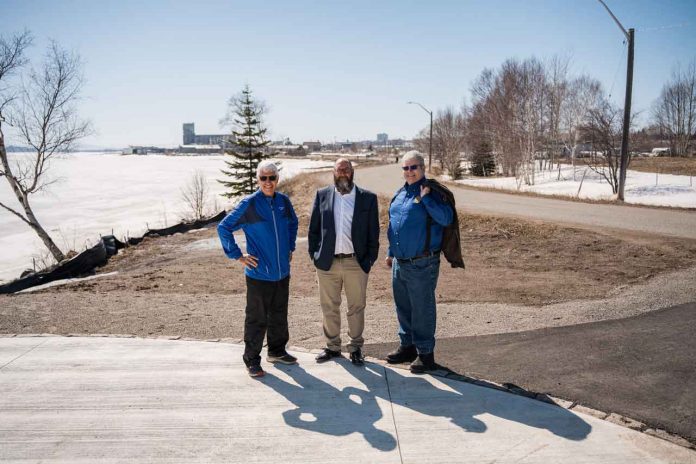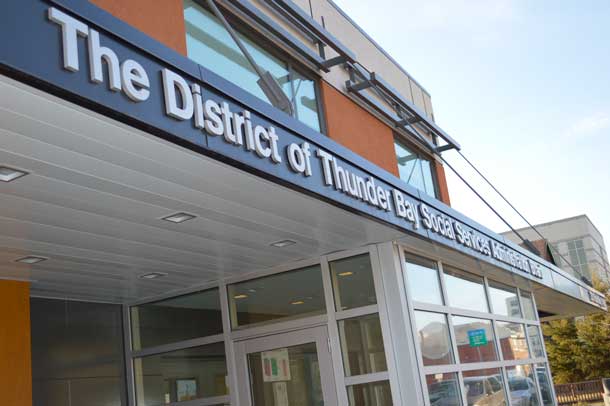
THUNDER BAY – LIVING – The Waterfront Trail Rotary Community Action Team (WTRCAT) has announced the findings of the Deloitte Canada Economic and Tourism Impact Study conducted on the proposed Waterfront Trail expansion of the City of Thunder Bay. The study reveals that there are positive resident perceptions and economic and tourism impacts associated with the proposed expansion of the trail.
According to the study, the proposed 13.5-kilometre expansion of the Thunder Bay Waterfront Trail can have a wide-ranging impact on the community. The economic impact of the expansion is expected to be significant, and the Thunder Bay Waterfront Trail project has received support from many partners. Destination Northern Ontario provided project oversight, while Deloitte, one of Canada’s leading professional services firms, conducted the study.
“Through the research completed on the economic and tourism impacts of the proposed waterfront trail, positive resident perceptions and economic and tourism impacts have been identified,” said Paul Blais Economic Advisor, Deloitte Canada. “Through extensive research, a citizen survey, economic modelling and stakeholder interviews, we have shown the value of the Thunder Bay Waterfront Trail project is wide-ranging.”
As the Economic Advisor of Deloitte Canada, Paul Blais, said that the research completed on the economic and tourism impacts of the proposed Waterfront Trail revealed positive resident perceptions and economic and tourism impacts. The study was conducted using extensive research, a citizen survey, economic modelling, and stakeholder interviews. WTRCAT Team-Lead Warren Philp said that the group was grateful to its partners who funded the study to assess the trail’s potential impact.
David MacLachlan, Executive Director of Destination Northern Ontario, said that urban trail expansions that connect city-specific tourism experiences with regional broad outdoor tourism products are key to a thriving tourism economy in Northern Ontario. Trails and waterfront trails are a popular attraction in cities around the world that retain visitors for longer stays and provide support to adjacent businesses, said Paul Pepe, Tourism Manager for Tourism Thunder Bay, part of the Thunder Bay CEDC. The study shows that the expansion of the Thunder Bay Waterfront Trail can have a positive economic impact on the city’s tourism sector.
Eleanor McMahon, President & CEO of Trans Canada Trail, said that they were glad to support the project, and the research confirms their belief that trails have a positive impact on quality of life for both residents and visitors to Thunder Bay. The revitalization of the City Waterfront Trail plays an important role in local tourism, provides economic benefits to the region, and focuses on sustainable recreation, enhancing economic development through tourism, and the quality of life of residents.
“Trails and waterfront trails in particular are a popular attraction in cities around the world that retain visitors for longer stays and provide support to adjacent businesses,” said Paul Pepe, Tourism Manager for Tourism Thunder Bay, part of the Thunder Bay CEDC. “This study, focused on the tourism related economic potential of an expanded Thunder Bay waterfront trail, provides positive insights into the economic impact of an expanded Thunder Bay waterfront trail. This study is in alignment with our strategic objective to investigate new visitor experience opportunities that grow Thunder Bay’s tourism sector,” concluded Pepe.
“We’re so pleased to support this project and are glad to see that the research reaffirms our belief that trails have a positive impact on quality of life for both residents of, and visitors to, Thunder Bay. The revitalization of the City Waterfront Trail plays an important role in local tourism, provides economic benefits to the region, and focuses on sustainable recreation – all of which contributes to enhancing economic development through tourism, as well as the quality of life of residents,” says Eleanor McMahon, President & CEO, Trans Canada Trail.
For more information, please visit www.thunderbaywaterfronttrail.com.






